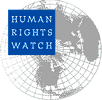
![]()
As the Taliban advanced northward toward Mazar-i Sharif in mid-July, civilians began to leave the city, with most heading south toward the mountains bordering the predominantly Hazara region of central Afghanistan known as Hazarajat. After the city of Shiberghan, some 130 kilometers southwest of Mazar, fell on August 2, a number of commanders reportedly left with their families. However, many residents did not believe that Mazar would fall so quickly, and the city’s population was largely taken by surprise when Taliban troops entered on August 8. In the ensuing panic, at least hundreds of civilians headed south on the main road out of the city, some in cars or other vehicles but many on foot. In the words of one witness, the road was “black” with people and cars. Many families left as soon as they could after the Taliban arrived on August 8. One witness who fled with his family described “a solid line of people from Mazar to Tangi Awlie,” an area just south of Mazar on the way to the mountains. Another witness stated that the road was so crowded with fleeing civilians that cars drove over the bodies of those killed because there was no way to go around them.
Moving for the most part ahead of the civilian crowd was a contingent of Hizb-i Wahdat troops, estimated by one well-informed source at about 700. The Hizb-i Wahdat forces reportedly robbed civilians of cash and cars as they left. There were also reported to be a number of Junbish and Jamiat troops on the road.
For at least two days after the takeover, the road was hit by rockets fired from Taliban positions west of Mazar. A source interviewd by Human Rights Watch stated that there were most likely BM-21 Grad (Hail) multiplerocket launchers, commonly known as Katyushas.11 An unknown number of civilians on the road were also killed when they were bombed by Taliban airplanes; witnesses stated that the bombs scattered hundreds of grenade-sized munitions over a wide area on the road. Eyewitnesses said that hamlets and small markets along the road were also destroyed in bomb and rocket attacks. In one such incident, witnesses said that rockets hit an area called Tangi Shadyan on the southern outskirts of the city at about 12:00 p.m., killing at least fifty. Cars and trucks carrying people were struck, and one witness stated that “people were in pieces” along the road. A witness who left immediately when the Taliban arrived told Human Rights Watch that he and his family carried with them nine bodies of a family that had been killed in a rocket attack on the road, including two women, three men, and four small children, and buried them in farmland on the way to the mountains.
Under international humanitarian law, the military forces retreating on the road were a legitimate military target for the Taliban forces. Many of the troops were also using civilian vehicles commandeered in Mazar-i Sharif, which would have made their identification as combatants difficult if not impossible. However, the Taliban forces were also obligated to take every precaution to refrain from harming or killing civilians. It is not known how many civilians were on the road in proportion to the combatants, but it is clear that hundreds of civilians were in flight on the road, many of them on foot, and they would have been visible from the air. The rockets and cluster bombs apparently used in the attacks are both notoriously inaccurate anti-personnel weapons designed to cause the maximum number of casualties.
![]()